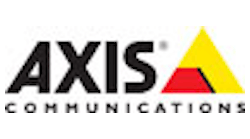ONVIF held a panel discussion at ISC West on Thursday to clarify its progress on its new profiles, as well as to dispel some of the misconceptions with the specifications that have been reported by its integrators and other users of the technologies.
The panel consisted of Per Björkdahl, Chairman of the ONVIF Steering Committee; Axis Communications security industry liaison Steve Surfaro; Matt Powers, Technical Director with Anixter; and Jeffrey Slotnick, CPP, PSP, President of consultancy Setracon Inc.
To start with, Björkdahl outlined ONVIF’s three video surveillance profile initiatives, which he said are the key to easily identifying interoperable products:
- Profile S describes conformant video management systems and devices, and is planned for release in June 2013.
- Profile G, scheduled to be released before the end of 2013, addresses recording and storage functionalities.
- Profile C involves effective integration of IP-based security and safety devices and will also be released before the end of 2013.
“Moving into the IP arena, products are far more complex,” Björkdahl said. “We have a lot to gain by removing the technical obstacles for manufacturers and standardization is the foundation.”
“These standards will allow you to support future technology as it develops,” Powers added. “For manufacturers, standards ease product development, ease innovation, and reduce the cost of design and testing.”
As far as the integrator/consultant point of view, Slotnick explained that specifying the standards makes their jobs easier. He then pointed to the printer industry as a model for standards development that the security industry can mirror. He explained that eight years ago, every computer printer had its own driver that had to be loaded into your computer “and then you prayed that it would work,” he said. As we know, today’s printers need only be plugged into a USB port, and the computer can recognize the device and enable basic print jobs immediately—this is because of standardization.
This comparison gave way to a discussion of the common misconceptions of the ONVIF standard. Since the specification does not cover every feature of every camera, some end-users and integrators are reportedly feeling short-changed when it comes to specifying compliant products. But Björkdahl pointed out that ONVIF is not designed to incorporate all features of all cameras—after all, video manufacturers are obviously in competition, they will continue to innovate and offer better options.
“ONVIF establishes a sound platform—a ‘floor level’ that can be raised as time goes on,” Björkdahl explained. “We don’t need a standard that does everything, just one that covers most common features.”
He added that these specifications and profiles do not inhibit innovation: “On the contrary, it fuels it,” Björkdahl said. This allows manufacturers to concentrate on the real value of delivering reliable products to the customer.”
“Don’t get caught up in the features,” Surfaro warned. “It is all about the customer’s needs. ONVIF is just an easier, cost-effective way of binding devices to solutions.”


